Research and Audit
Key Message


Getting evidence into practice.
The effective practitioner is constantly trying to improve services and care. This frequently involves research and audit projects. This will typically include a project plan and an implementation plan that includes the necessary resources and a strategy for evaluation.
The model for improvement is used frequently within healthcare. Plan, Do, Study, Act (PDSA) cycles providing a quick and effective way to generate evidence and measure impact. You should consider how to write up and share local initiatives. The information here may help support you with this.
What does this mean for the Effective Practitioner?
The Effective Practitioner needs good report writing skills in order to write up a project succinctly, highlighting the techniques used, findings and recommendations for practice improvement. Consideration should also be given to disseminating results to others thus presentation skills are also be important at this stage. The Nurses, Midwives and Allied Health Professionals may also want to include others to help rollout, evaluate and refine through audit any practice improvements so that they become fully embedded in your service.
![]() You can download a copy of
the Research and Audit
learning activities.
You can download a copy of
the Research and Audit
learning activities.
Reflection
Remember, recording your reflections is an important part of the learning process. Take time to structure your thoughts, feelings and any future actions on one the forms available in the Reflective Practice section. Click here to visit the page.
In your reflections you could also consider how your learning relates to the Clinical Practice, Facilitation of Learning and Leadership pillars of practice.
Return to topSupplementary Resources

